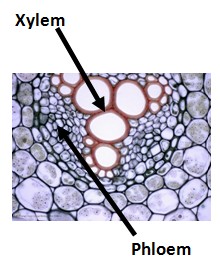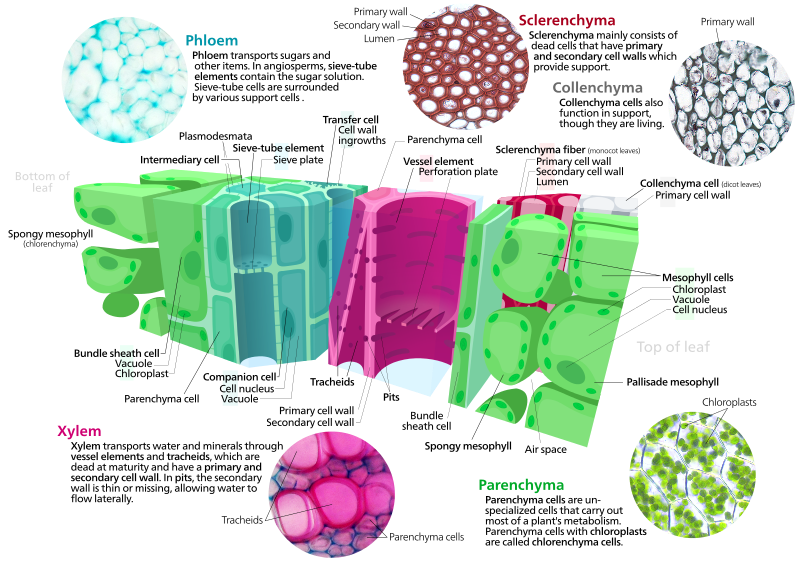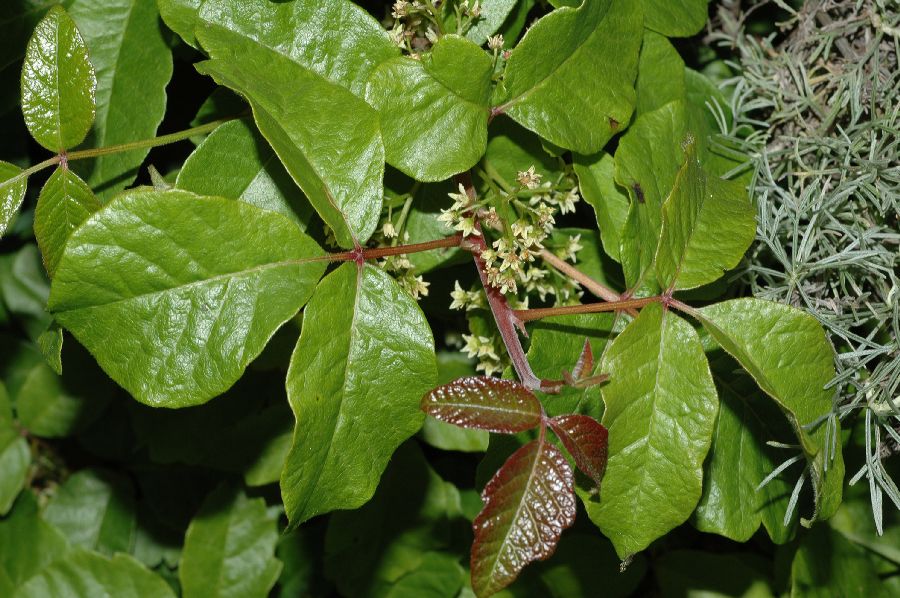Nutrition
Like many other plants Toxicodendron diversilobum is a primary producer that create their own food through photosynthesis. During photosynthesis the poison oak plant uses carbon dioxide, water, and sunlight to produce sugars in the form of sucrose as well as oxygen as a waste product. The plant uses photosynthesis for sucrose production. If not being used right away the poison oak plant will turn the sucrose into starch for storage.
Photosynthesis occurs in specialized cells called chlorophyll in the
leaves of the plant. To make the process of photosynthesis
possible the plant possesses specialized tissue known as vascular
tissue. There are two main types of vascular tissue present
in plants the xylem and the phloem.

The first is xylem which is primarily involved in the water transport throughout the plant. There are four main reasons why the plant is able to transport water all the way up the plant to every cell. The first reason is transpiration which is essentially the loss of water by the plant to the atmosphere through stomata. The second is adhesion which is the attraction of molecules of different substances which in plants results in water being drawn up the xylem through capillary action. Along with the adhesion is the third reason cohesion which is the attraction of molecules of the same substance which allows the water in the xylem to form one long continuous tube of water and nutrients. The final reason is tension which draws the water up the plant with a "pulling force" created by the transpiration in the leaves.
The second type of tissue is phloem which carries and transports the food of the plant, sucrose, and also amino acids and other solutes. This system works by what is known as the Mass Flow Theory. This theory found by Ernst Munch is based on a pressure gradient. As sugars made in the leaves is transported via active transport into the phloem where a high concentration of sugars forms. Since the phloem and the xylem are within contact with each other the sudden high concentration of sugar in the phloem creates a gradient for water to flow from the xylem to the phloem due to osmosis. The water now in the phloem creates osmotic pressure pushing the sugars to areas of lower osmotic pressure.

